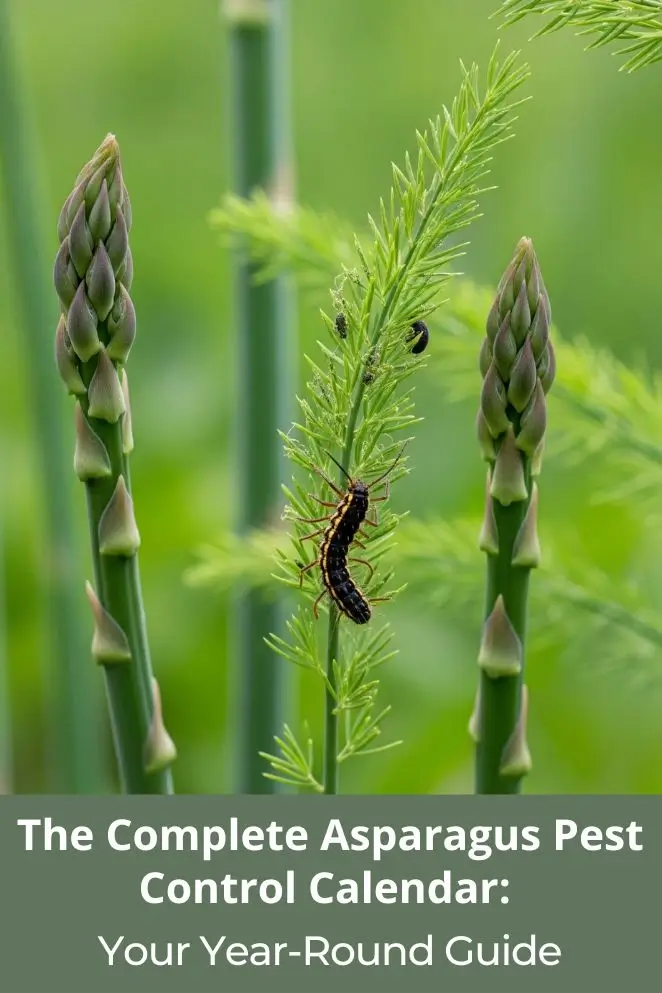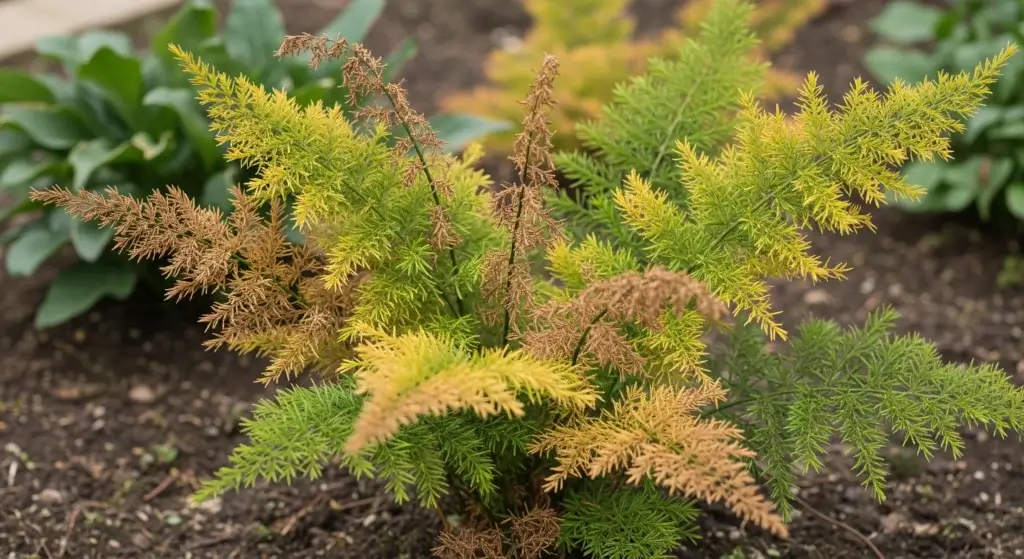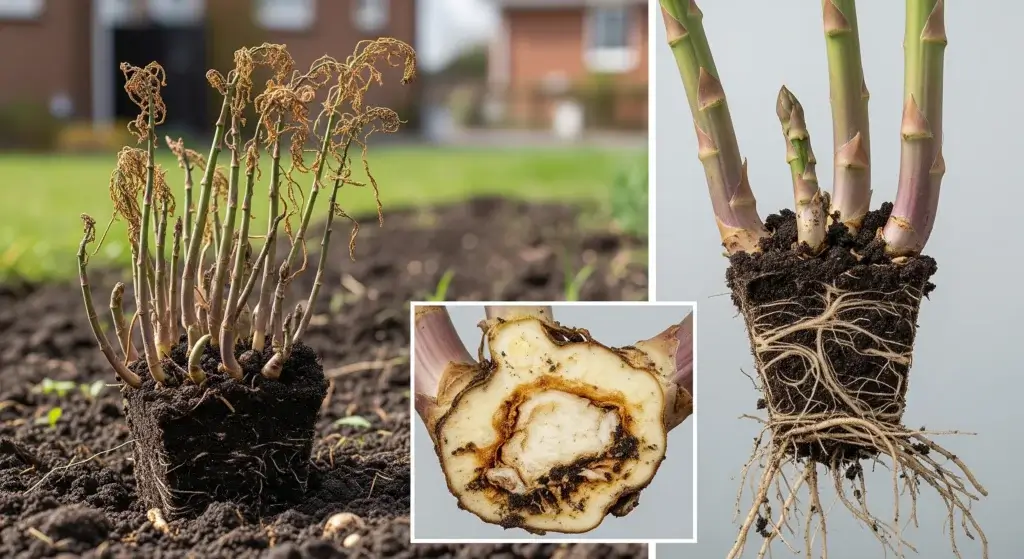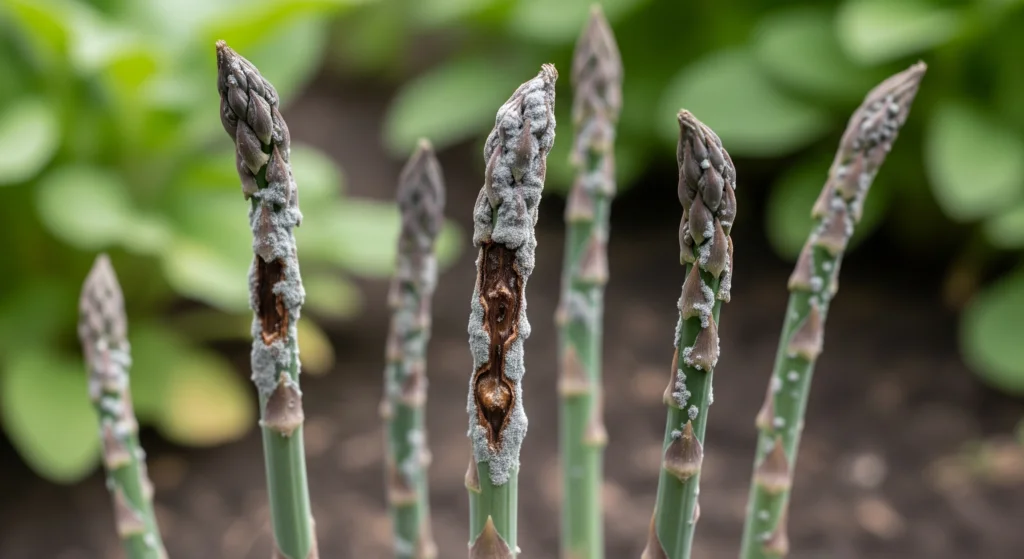
Growing asparagus isn’t just “plant it and chill.”
This crop lives for decades, and along the way it battles beetles, weeds, and other troublemakers that can wreck your harvest.
That’s why you need a pest-control game plan — think of it like a calendar that keeps your asparagus safe and thriving.
Whether you’ve got a giant field or just a backyard bed, knowing when pests show up and zapping them at the right moment is the difference between a feast of fresh spears and staring at sad, chewed-up plants.
This guide lays out the month-by-month moves so you stay one step ahead.
Understanding Asparagus Pest Challenges
Growing asparagus is like adopting a long-term houseguest — it sticks around for 15–20 years, so you can’t just yank it out and start over when things go sideways.
That’s why integrated pest management (IPM) — smart, ongoing care — is your secret weapon.
The big troublemakers are the common asparagus beetle and the spotted asparagus beetle, plus cutworms, aphids, and a stubborn cast of weeds.
Each one has its own life cycle and weak moments, so timing your moves matters more than spraying everything willy-nilly.
In spring, when the soil warms up, beetles crawl out of hiding hungry and ready to mate and lay eggs right when you’re harvesting — rude timing.
Knowing these seasonal patterns lets you hit pests with targeted, effective measures before they wreck your crowns.
Early Spring Preparation (March – Early April)
Field inspection and cleanup
Before your asparagus wakes up, give the beds a deep clean.
Clear out last year’s dead ferns and junk — that’s where beetles and other pests hide all winter.
Check crowns for damage and note any spots that got hammered by pests last season.
Those areas will need extra watch this year.
Pre-emergent weed control
Weeds are like squatters — they pop up before your asparagus even shows.
Hit them early with pre-emergent herbicide once the soil hits 50–55°F, about 2–4 weeks before spears appear.
Catching them now means way less drama later.
Equipment prep
Make sure your sprayers actually work before you need them.
Calibrate for correct rates and check your safety gear too.
Nothing’s worse than realizing mid-spray that your nozzle’s clogged or your gloves have holes.
Peak Harvest Season (April – June)
Asparagus beetle monitoring and control
Beetles show up right as your spears do — usually early May — and this is the danger zone.
Check plants daily, especially in the afternoon when beetles are partying.
Look for adults, eggs on spears, and chew marks.
In small patches, pick them off by hand (weirdly satisfying).
In bigger plots, use insecticides on warm, sunny days.
Harvest clean every 3–5 days so beetles have fewer spots to lay eggs, and let a few edge plants fern out to lure them away.
Cutworm management
Cutworms are like midnight ninjas that chop spears at the base.
They’re active from April onward, so scout regularly.
Spot cut stalks? Dig around the soil for the culprits.
If more than 5% of spears are getting whacked, it’s time for treatment.
Harvest timing and pest prevention
Don’t let spears linger.
Cut them at 6–8 inches for best quality and to mess with beetle life cycles.
Regular, fast harvesting keeps your asparagus tasty and pest pressure low.
Think of it as staying one step ahead in a season-long chess match with bugs.
Post-Harvest Management (Late June – August)
Fern development and monitoring
Once harvest wraps, let all spears grow into tall ferns — that’s how crowns recharge for next year’s crop.
Fertilize to boost growth, keep scouting for beetles chewing on ferns, and watch for aphid colonies.
Weeds also start creeping in, so don’t slack on control.
Post-harvest herbicide applications
Without daily harvesting, weeds spread fast and steal nutrients.
Use post-emergent herbicides that are safe for asparagus, or go organic with mulch or corn gluten meal.
The point is: don’t let weeds turn your bed into a jungle.
Beetle population management
Beetles don’t quit after harvest.
The good news? You can finally use stronger systemic insecticides since you’re not cutting spears.
This is the perfect time to hit them harder and shrink their numbers before next year. Think of it as revenge season.
Late Summer and Fall (September – November)
Fern maintenance and monitoring
Let ferns stand while they’re still green — they’re the battery chargers for next year’s spears.
Keep an eye out for late pests that can sap strength before dormancy.
September tasks
- Continue checking for aphids on mature ferns.
- Scout for any late beetle action.
- Look over plant health and vigor.
- Mark spots that need extra care next season.
Preparing for Winter
October–November management:
- Let ferns naturally turn brown — don’t chop them too soon.
- Time cleanup to local weather so crowns get max energy.
- Order supplies and sketch next year’s pest plan now while it’s fresh.
Record keeping and planning
Write down what worked, what flopped, and where pests hung out.
Maps of hot spots, treatment results, and yield notes are gold — they’ll save you headaches (and time) next year.
Winter Preparation and Planning (December – February)
Field cleanup
Once the ferns are totally dead and winter’s locked in, clear the beds.
Leaving that old fern junk around is basically free housing for pests.
Cut ferns 2–3 inches above ground, haul away all debris, yank volunteer plants, and compost waste far from your asparagus patch.
Planning next year’s program
Winter is thinking season.
Go over last year’s notes, figure out what worked (and what flopped), and sketch out your pest-control game plan.
Research new tools, prep equipment, test soil, and line up seeds, crowns, and supplies. Future you will thank present you for being this organized.
Integrated Pest Management Strategies
Biological control options
Invite the good guys.
Lady beetles, parasitic wasps, and predatory mites eat the pests that mess with asparagus, so give them a freebie habitat and they’ll do the dirty work for you.
Plant a mix of flowers and nectar plants around the beds so beneficial insects have food and a place to hang out.
And whatever you do, avoid broad-spectrum insecticides — spraying those is like carpet-bombing your garden and killing the helpful insects along with the bad ones.
Cultural control methods
Small daily habits add up. Space plants so air actually moves (damp, crowded beds = fungus party).
Don’t overdo fertilizer — too much soft growth is basically a dinner invitation for pests.
Rotate crops in the areas around your asparagus if you can, and keep things tidy: pull weeds, remove plant debris, and clean up messes before pests set up shop.
Think of it as gardening hygiene — cleaner beds, fewer problems.
Resistance management
If you use chemicals sometimes, don’t keep using the same one forever — pests get wise and build resistance.
Rotate products that work in different ways, track what you sprayed and when, and note how well it worked.
Records aren’t boring homework here — they’re your cheat sheet for beating pests next year without losing your best tools.
Organic and Sustainable Approaches
Organic pest control options
If you want to keep things natural (or you’re running a certified organic setup), you’ve got plenty of tricks up your sleeve that don’t involve drenching your asparagus in chemicals.
Organic beetle control
Row covers are like pest-proof blankets for your plants in the early season (just remember to pull them back when it’s harvest time).
Beneficial nematodes? Think of them as microscopic earth warriors that hunt beetle larvae underground.
If things get really gnarly, there are organic-approved botanical sprays.
And of course, you can always go old-school — pick the beetles off by hand.
Yeah, it’s a little gross, but trust me, it’s way easier than watching them take over.
Organic weed management
Corn gluten meal works as a natural pre-emergent weed fighter.
Mulch is your bestie here too — keeps weeds down and moisture in.
Some growers even use flame weeding, which sounds metal but requires a steady hand (don’t barbecue your asparagus, okay?).
And if all else fails, there’s always hand-pulling and hoeing — the garden equivalent of leg day.
Sustainable long-term strategies
Think marathon, not sprint. Don’t nuke pests at the first sight of one bug — wait until they actually hit damage thresholds before acting.
Mix and match methods (bugs, mulch, hand-picking, sprays) so you’re not relying on just one thing. Keep an eye on your “good bugs” too — you don’t want to kill your allies.
And the biggest flex? Always improve your system year after year.
Smart gardeners don’t just fight pests — they build a whole ecosystem where pests never stand a chance.
Monitoring and Record Keeping
Essential monitoring activities
Here’s the deal: you can’t just plant asparagus and hope for the best — you’ve gotta play detective all season.
Regular scouting is like checking your phone battery; ignore it too long, and suddenly you’re in trouble. Walk your beds every week and pay attention.
Weekly monitoring checklist:
- Count beetle adults and larvae (they multiply faster than memes go viral).
- Spot and track where egg masses show up.
- Check what weeds are moving in and how much turf they’re taking.
- Notice if your “good bugs” like lady beetles are hanging around.
- Step back and vibe-check the overall plant health.
Documentation systems
This is the part most teens would roll their eyes at — record keeping. But trust me, future you will thank present you.
Write down everything like you’re running a science experiment.
- Dates, materials, and how much you used.
- Weather conditions (because pests love drama — hot, humid, rainy? They’ll show up).
- Pest counts before and after treatments (did it work or nah?).
- How much damage you actually saw and if it cost you yield.
- Which treatments were worth it and which were a waste of time.
Conclusion
Managing asparagus pests isn’t a “set it and forget it” thing — it’s a year-round hustle.
You’ve gotta mix different strategies, time them right, and stay on top of what’s happening in your beds.
This calendar is your roadmap, but just like playlists, you’ll need to tweak it for your own vibe (local pests, weather, and goals).
The secret sauce? Know the enemy’s life cycle, prevent problems before they blow up, keep solid notes, and adjust as you go.
Healthy plants are your best defense, so don’t sleep on nutrition, water, and good garden habits.



